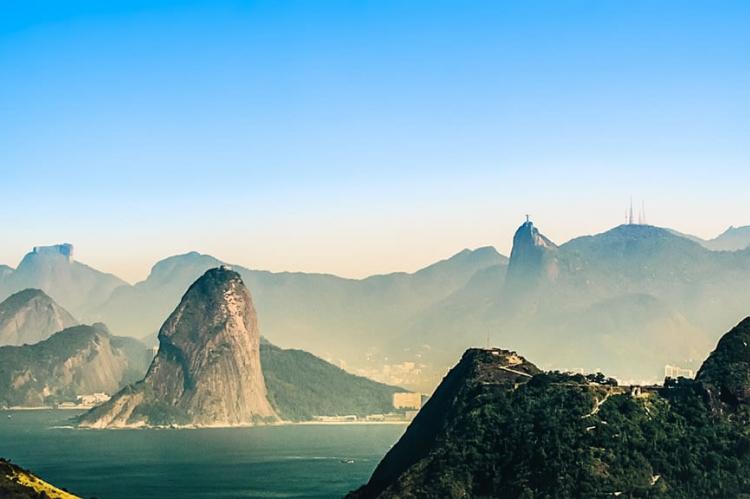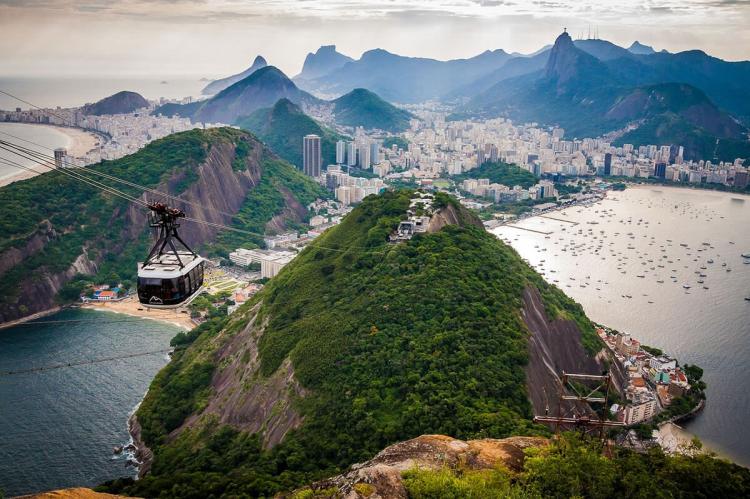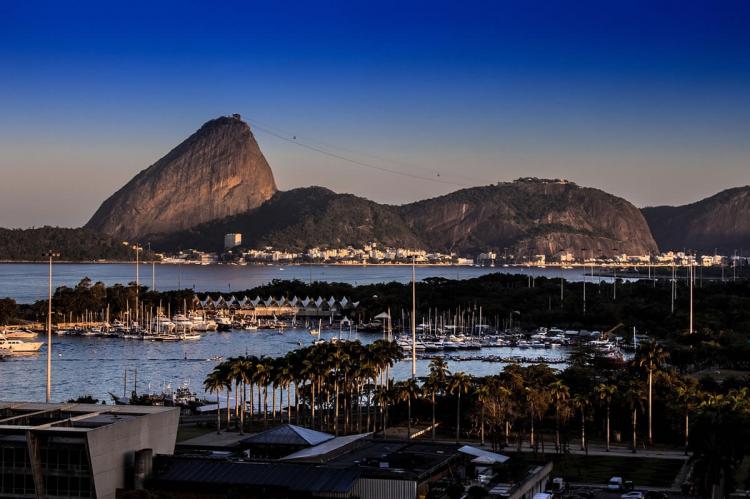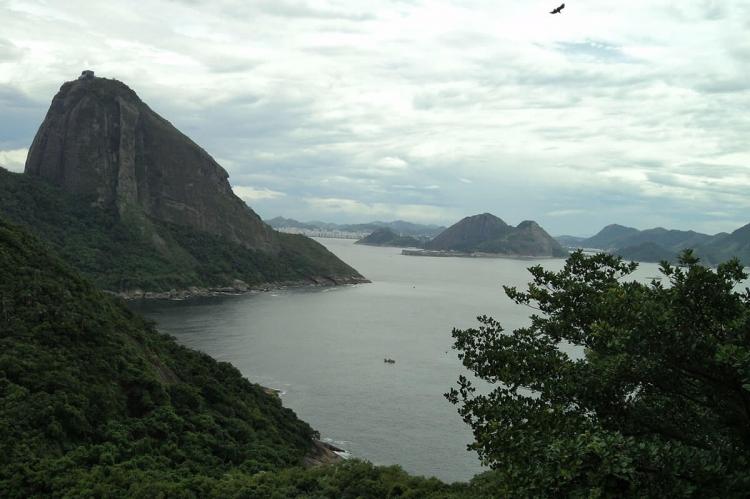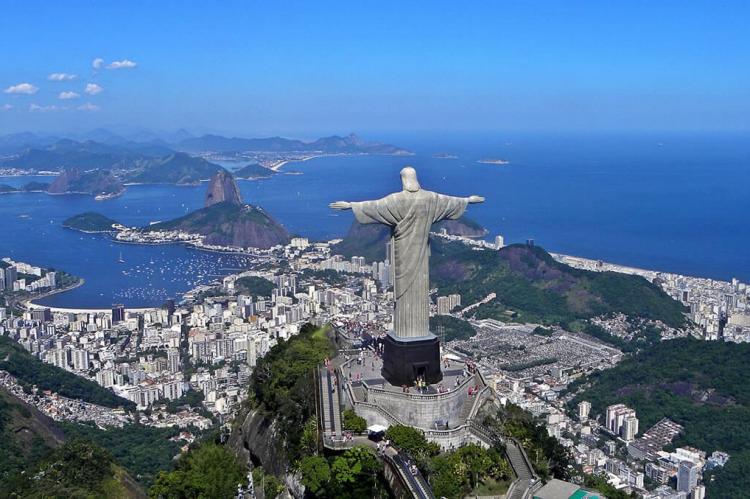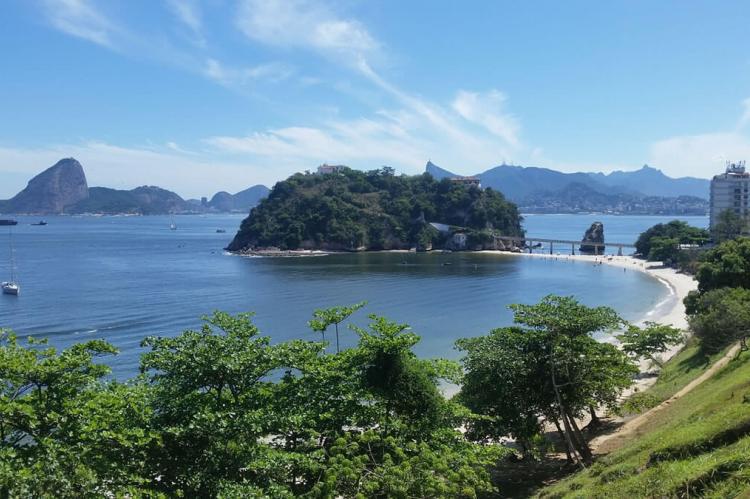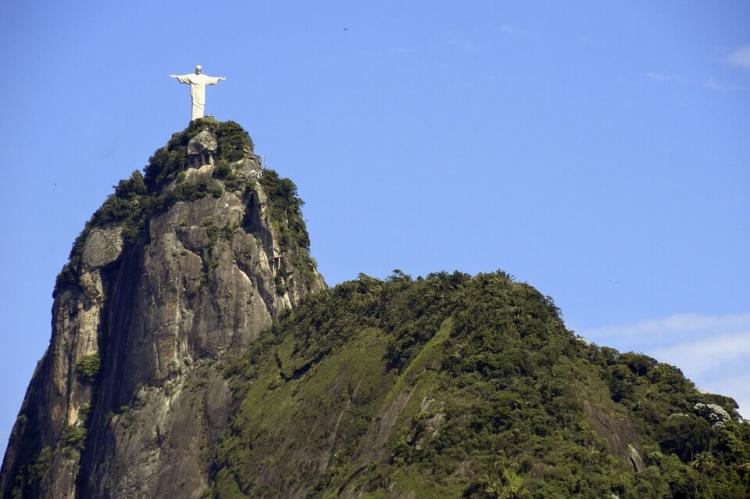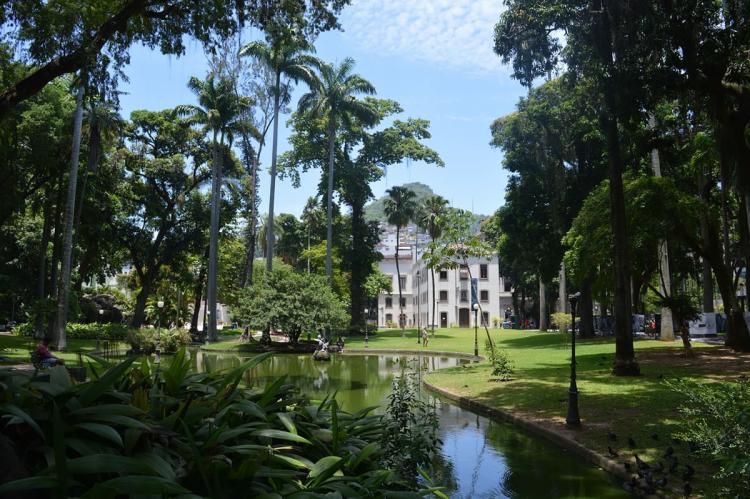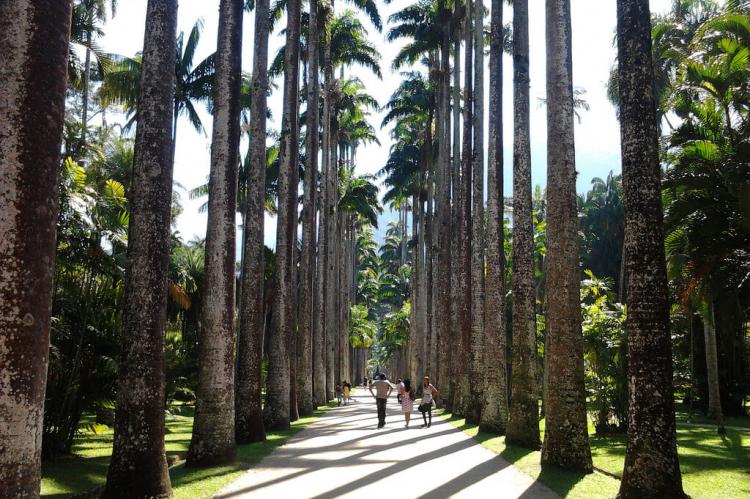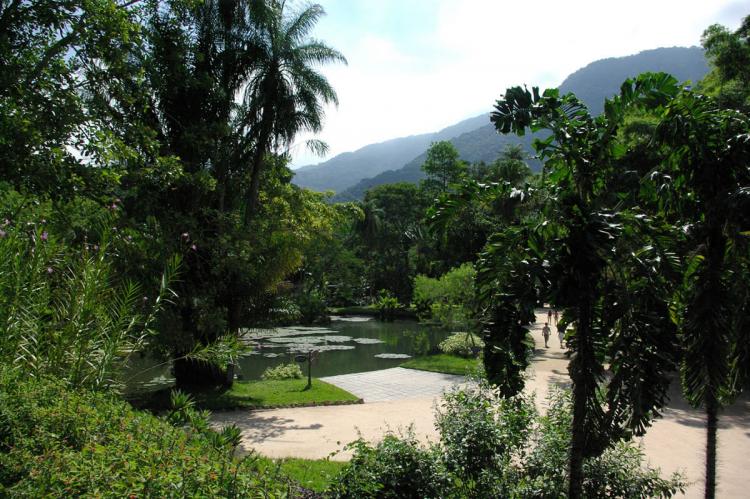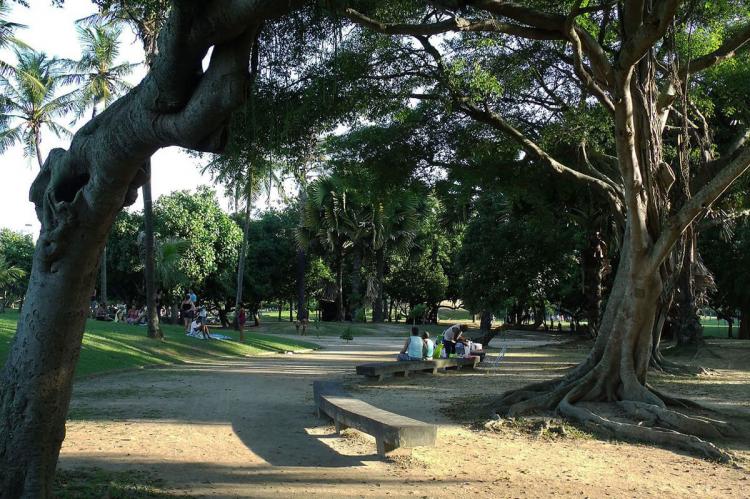Exploring Rio de Janeiro: Between Mountains and Sea
Nestled along Brazil's southeastern coast, Rio de Janeiro, known as the "Cidade Maravilhosa" or Marvelous City, captivates with its stunning blend of natural wonders and vibrant urban life. It is renowned for its breathtaking landscapes, rich cultural heritage, and iconic landmarks.
The Marvelous City: Rio de Janeiro's Unique Landscapes
Nestled along Brazil's southeastern coast, Rio de Janeiro, known as the "Cidade Maravilhosa" or Marvelous City, captivates with its stunning blend of natural wonders and vibrant urban life. Renowned for its breathtaking landscapes, rich cultural heritage, and iconic landmarks, Rio de Janeiro has earned international acclaim, including the prestigious UNESCO designation of "Carioca Landscapes Between the Mountain and the Sea."
Geography and Landscape
Natural Beauty
Rio de Janeiro boasts a spectacular geographical setting that blends urbanity with nature's wonders. The city is framed by the majestic Tijuca National Park, the world's largest urban rainforest, highlighting the harmonious coexistence of urban development and the natural environment. This park covers approximately 32 square kilometers (12.3 square miles) and is home to hundreds of species of plants and wildlife, some of which are endemic to the region. The park's dense foliage and cascading waterfalls provide a serene escape from bustling city life, making it a popular destination for hikers and nature enthusiasts.
The azure waters of the Atlantic Ocean gently caress Rio's shores, enhancing the captivating panorama of mountains, forests, and beaches. The dramatic topography of Rio is characterized by forested mountains that tower over the city, cascading down to the coast in a breathtaking display of nature's grandeur. Iconic peaks such as Sugarloaf and Corcovado mountains stand as sentinels, framing the broad sweeps of Guanabara Bay. This expansive bay adds to the city's aesthetic allure and plays a vital role in sheltering Rio from the mighty Atlantic Ocean. These natural elements form the backdrop to Rio's urban canvas, where forested peaks and coastal panoramas create a visually stunning and harmonious environment.
Iconic Landmarks
Rio de Janeiro's landscape is dotted with iconic landmarks contributing to its unique charm. The Christ the Redeemer statue atop Corcovado Mountain is one of the most recognizable symbols of Brazil. This statue, standing 30 meters (98 feet) tall with an arm span of 28 meters (92 feet), offers a panoramic view of the city and has been listed as one of the New Seven Wonders of the World. The journey to the statue involves a scenic train ride through the lush Tijuca Forest, adding to the experience.
Sugarloaf Mountain, another iconic landmark, offers an unparalleled view of the city and the surrounding coastline. Accessible by a glass-walled cable car, the summit provides a 360-degree view that captures the essence of Rio's natural beauty. The mountain's unique shape and location at the mouth of Guanabara Bay make it a focal point of the city's landscape.
UNESCO Designation
Cultural and Natural Amalgamation
In 2012, UNESCO recognized Rio de Janeiro's exceptional cultural and natural amalgamation by bestowing the title "Carioca Landscapes Between the Mountain and the Sea." This designation underscores the unique coexistence of urban development and natural wonders, emphasizing the harmonious relationship between human creativity and the breathtaking landscape.
Historic Center of Rio de Janeiro
At the heart of the UNESCO designation is the historic center of Rio de Janeiro, which served as the epicenter of Portuguese colonial influence in Brazil. The historic center is a treasure trove of architectural gems and cultural landmarks that reflect the city's rich history. Key landmarks include the Carioca Aqueduct, an impressive 18th-century structure that bridges the famous Santa Teresa Tram. The Municipal Theatre, inspired by the Paris Opera House, stands as a testament to Rio's cultural sophistication. The Imperial Palace, once the residence of the Portuguese royal family, now houses a cultural center that hosts exhibitions and events.
Tijuca National Park
The UNESCO designation also encompasses the lush Tijuca National Park, highlighting Rio's dedication to preserving its natural heritage. The park offers a haven for biodiversity and features iconic landmarks such as Pico da Tijuca, the highest peak in the park, and the famous Christ the Redeemer statue on Corcovado Mountain. Visitors can explore trails leading to waterfalls, caves, and scenic viewpoints, providing a comprehensive experience of Rio's natural beauty.
Corcovado and Sugarloaf Mountain
Two of Rio's most iconic landmarks, Corcovado Mountain and Sugarloaf Mountain, contribute significantly to the UNESCO designation. The towering Christ the Redeemer statue atop Corcovado and the cable car ride to the summit of Sugarloaf Mountain provide unparalleled views of the cityscape and natural surroundings. These landmarks are tourist attractions and symbols of Rio's cultural and historical heritage.
Copacabana and Ipanema Beaches
The world-famous beaches of Copacabana and Ipanema, integral components of Rio's cultural identity, are also part of the designated landscapes. These vibrant stretches of sand symbolize the city's connection to the sea and serve as lively hubs for social and recreational activities. With its iconic black-and-white wave-patterned promenade, Copacabana Beach hosts numerous cultural events and festivals throughout the year. Ipanema Beach, immortalized in the famous song "The Girl from Ipanema," is known for its vibrant atmosphere and stunning sunsets.
Cultural Vibrancy
Carnival and Festivals
Beyond its UNESCO recognition, Rio de Janeiro is celebrated for its vibrant cultural scene. The annual Carnival is a spectacular showcase of music, dance, and elaborate costumes, drawing millions of worldwide visitors. This world-renowned festival exemplifies the city's cultural vitality and creative spirit. Samba schools from different neighborhoods compete in elaborate parades that feature intricate floats and choreographed performances, creating a visual and auditory feast for spectators.
Diverse Neighborhoods
Rio's diverse neighborhoods contribute to its reputation as a melting pot of cultures. The bohemian district of Santa Teresa, with its narrow winding streets and colonial mansions, contrasts with the bustling nightlife of Lapa, known for its vibrant samba clubs and historic arches. Each neighborhood offers a unique experience, reflecting the city's multifaceted identity. The neighborhood of Botafogo, located between Sugarloaf Mountain and Corcovado, is a trendy area known for its eclectic mix of bars, restaurants, and cultural spaces.
Museums and Cultural Institutions
Rio de Janeiro is home to numerous museums and cultural institutions celebrating its rich history and artistic heritage. The Museum of Tomorrow, an innovative science museum located in the revitalized Port Zone, explores the possibilities of the future through interactive exhibits and cutting-edge technology. The Rio Art Museum, also located in the Port Zone, features a diverse collection of Brazilian art, highlighting the country's cultural evolution. The National Museum, although tragically damaged by fire in 2018, continues to be an important symbol of Brazil's scientific and cultural history.
Natural Attractions and Outdoor Activities
Tijuca National Park
As part of the UNESCO designation, Tijuca National Park is a haven for biodiversity and a paradise for outdoor enthusiasts. The park's extensive network of trails caters to hikers of all levels, offering routes that range from easy walks to challenging climbs. One of the most popular trails leads to the summit of Pico da Tijuca, providing breathtaking views of the city and the surrounding forest. The park is also home to the Cachoeira das Almas, a serene waterfall that offers a refreshing escape from the city's heat.
Botanical Garden
The Rio de Janeiro Botanical Garden, established in 1808, is another natural gem in the city. The garden, spanning 140 hectares (346 acres), boasts a diverse collection of over 6,000 plant species, including rare and endangered species. The garden's serene pathways, picturesque ponds, and stunning greenhouse displays make it a popular destination for tourists and locals. Highlights include the Avenue of Royal Palms, the Japanese Garden, and the Amazon Region section, which showcases the flora of the Amazon Rainforest.
Lagoa Rodrigo de Freitas
Lagoa Rodrigo de Freitas, a large lagoon in the heart of Rio, is surrounded by parks, bike paths, and recreational areas. The lagoon is popular for outdoor activities such as jogging, cycling, and rowing. The surrounding parks offer ample space for picnics and family gatherings, while the numerous kiosks along the shore provide a variety of dining options. The lagoon's scenic beauty, with the backdrop of the Corcovado and the Christ the Redeemer statue, makes it a favorite spot for relaxation and recreation.
Conclusion
Rio de Janeiro's UNESCO designation of "Carioca Landscapes Between the Mountain and the Sea" is a testament to the harmonious integration of nature and urbanity. The city's commitment to preserving its historical, cultural, and natural treasures ensures that future generations can continue to marvel at the captivating landscapes that make Rio de Janeiro a true marvel of the modern world. Its stunning geography, rich cultural vibrancy, and iconic landmarks make Rio de Janeiro a beacon of beauty and resilience, inviting all to experience its wonders. From its lush rainforests and pristine beaches to its historic landmarks and vibrant neighborhoods, Rio de Janeiro offers a unique and unforgettable experience that captures the essence of Brazil.
